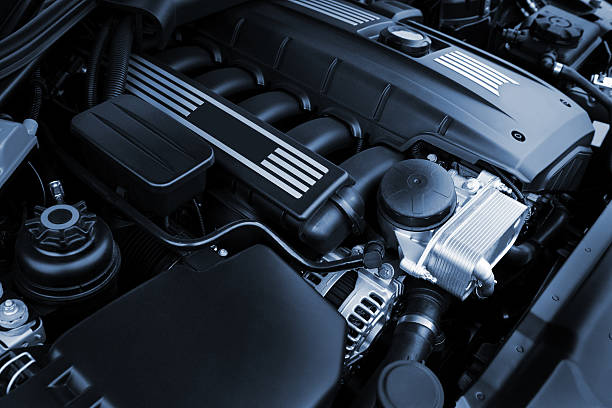Camshaft Profiling: The Art and Science of Engine Breathing
Revving up engine performance is more than just raw power. It's about the intricate dance of air and fuel, orchestrated by a crucial component: the camshaft. This often-overlooked piece of engineering marvel is the heartbeat of internal combustion engines, dictating how an engine breathes. But what exactly is camshaft profiling, and why does it matter so much to gearheads and casual drivers alike? Let's dive into the world of lobes, lift, and duration to uncover the secrets behind this precision-engineered conductor of the combustion symphony.

Camshaft profiling is both an art and a science. It requires a deep understanding of fluid dynamics, thermodynamics, and materials science. Engineers must balance multiple factors: valve lift (how far the valve opens), duration (how long it stays open), and timing (when in the engine cycle the valve opens and closes). Each of these elements plays a crucial role in determining an engine’s personality – its power curve, fuel efficiency, and even its sound.
Historical Evolution of Camshaft Design
The concept of using cams to control valve operation dates back to the early days of the internal combustion engine. In the beginning, camshafts were simple affairs with basic lobe designs. As engineers began to understand the importance of valve timing and lift, camshaft profiles became increasingly sophisticated.
The 1960s and 1970s saw a boom in camshaft innovation, particularly in the realm of high-performance engines. Racing teams experimented with radical cam profiles to squeeze every ounce of power from their engines. This era of experimentation led to significant advancements in understanding how camshaft profiles affect engine performance across different RPM ranges.
The Science of Lobe Design
The shape of a cam lobe is far more complex than it might appear at first glance. Modern lobe profiles are designed using advanced computer modeling and simulation techniques. Engineers consider factors such as valve acceleration rates, overlap between intake and exhaust valve openings, and the dynamics of valve springs.
One key aspect of lobe design is the ramp profile – how quickly the valve opens and closes. A aggressive ramp can provide quick valve opening for high-RPM performance but may cause excessive wear on valve train components. A more gradual ramp, on the other hand, can improve low-end torque and engine longevity.
The duration of valve opening is another critical factor. Longer duration typically allows more air and fuel into the cylinder, potentially increasing power at high RPMs. However, this can come at the cost of low-end torque and idle quality. Striking the right balance is key to achieving the desired engine characteristics.
Customizing Engine Characteristics Through Profiling
One of the most fascinating aspects of camshaft profiling is its ability to dramatically alter an engine’s personality. A cam profile designed for a high-revving sports car will look vastly different from one intended for a low-end torque-focused truck engine.
For instance, a camshaft with a high lift and long duration is often used in racing applications where maximum high-RPM power is the goal. This profile allows the valves to stay open longer, maximizing the amount of air and fuel that can enter the combustion chamber at high engine speeds. However, this same profile would result in poor low-end performance and a rough idle in a street car.
Conversely, a camshaft with lower lift and shorter duration is better suited for everyday driving. It provides smooth idle characteristics, good low-end torque, and better fuel efficiency. This type of profile is commonly found in many production cars, where drivability and efficiency are prioritized over maximum horsepower.
Advanced Profiling Techniques
As engine technology has evolved, so too have camshaft profiling techniques. One significant advancement is the use of asymmetrical lobe profiles. These designs feature different opening and closing ramps, allowing engineers to fine-tune valve events with even greater precision.
Another innovation is the development of variable cam timing (VCT) systems. These allow the camshaft’s position relative to the crankshaft to be adjusted on the fly, effectively altering the cam profile characteristics during engine operation. This technology enables engines to optimize performance across a wider range of operating conditions.
The Role of Materials and Manufacturing
The effectiveness of a camshaft profile is only as good as the materials and manufacturing processes used to create it. Modern camshafts are typically made from hardened steel or cast iron, with the lobes carefully ground to precise specifications.
Advanced manufacturing techniques, such as CNC machining and precision grinding, allow for incredibly accurate reproduction of complex lobe profiles. Some high-performance camshafts even utilize exotic materials like billet steel or have special coatings to reduce friction and wear.
The Future of Camshaft Profiling
As we look to the future, camshaft profiling continues to evolve. With the rise of computer-controlled manufacturing and advanced simulation software, engineers can explore increasingly complex and optimized profiles. Some cutting-edge designs are even experimenting with individually actuated valves, potentially eliminating the traditional camshaft altogether.
However, for the foreseeable future, the art and science of camshaft profiling will remain a crucial aspect of internal combustion engine design. As emissions regulations tighten and the demand for efficiency increases, the ability to precisely control an engine’s breathing through clever cam profiles will only become more important.
Whether you’re a performance enthusiast looking to squeeze every last horsepower from your engine or an everyday driver seeking the perfect balance of efficiency and power, understanding camshaft profiling offers a window into the heart of engine design. It’s a testament to the ongoing pursuit of perfection in automotive engineering – a pursuit that continues to push the boundaries of what’s possible in the world of internal combustion.





